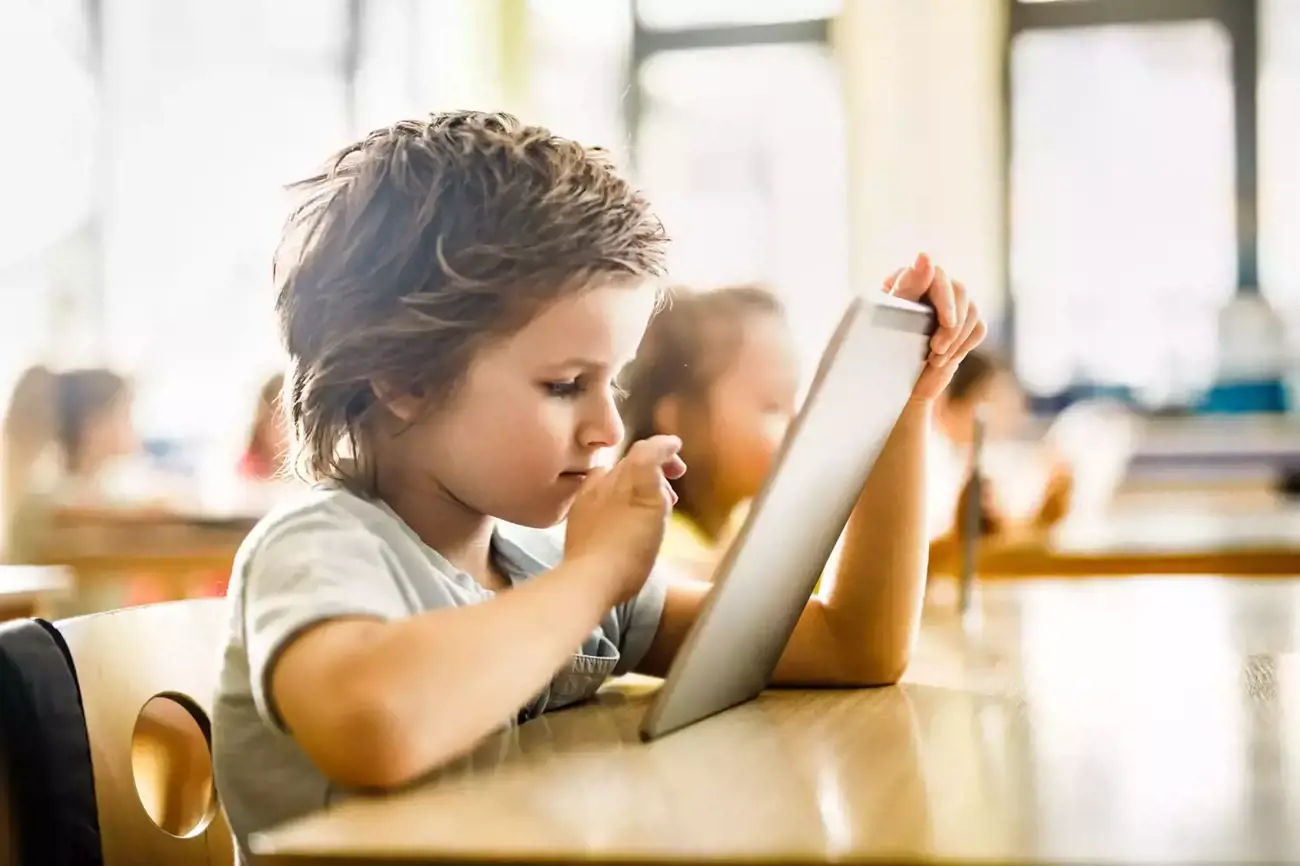Outside school hours care (OSHC) provides many opportunities for your child to learn, play, relax and socialise as you clock up hours at work. And although classic resources, like ball games and art materials, still have an important place in OSHC, there’s much to be gained from modern technology, too.
With educators on stand-by and appropriate content at hand, your child can tap into many quality learning experiences by using a digital device.
Here, we see how the Australian Children’s Education and Care Quality Authority (ACECQA) is encouraging OSHC services to plan and implement programs with screen time in mind.
How should outside school hours care services approach digital devices?
OSHC provides a real opportunity to engage, entertain and educate school-aged children, and although there’s a general apprehension around unbridled access to digital devices, services can offer tech experiences that fire up the braincells and bring children together, just like schools do.
The main thing is that careful thought goes into the use of digital devices.
Before launching in, ACECQA suggests that OSHC services think about how the devices will work in their individual setting and collaborate with children and families when considering digital opportunities.
Specifically, ACECQA says service leaders and educators should consider:
- The learning and development opportunities that digital devices offer,
- How these devices are made available to school-aged children, and
- How they can be used appropriately in the OSHC setting.
Guidelines and aspirations can be established to ensure that any potential risks are managed, technology is shared fairly, and children reap the rewards of a digital education.
What learning benefits do digital devices offer?
Digital devices put a world of information and experiences at children’s fingertips, and in the OSHC environment, quality screen interactions benefit school-aged learners in these key ways:
- Digital experiences can boost children’s creativity and extend their learning
ACECQA says that ‘rich, open-ended experiences’, like music production, movie-making, coding, robotics and animation design can all be offered at OSHC, and these kinds of engaging projects help children build skills and think inventively.
Along the way, they develop ‘key learning dispositions’, such as curiosity, perseverance, problem-solving skills, and confidence.
- Digital experiences can support interactions between children, and between children and educators
Although we often think of digital activities as solitary pursuits, ACECQA explains that ‘Many experiences involving the use of digital devices in leisure-based learning can promote a high degree of social interaction, supporting children to collaborate, learn from, and help each other.’
For example, educational games often include multiplayer, and creative projects see children bouncing ideas off each other.
When it comes to child-educator interactions, digital devices can be used as a basis for collaborative group projects, with educators using ‘intentional teaching’ to enhance children’s learning (by being thoughtful, deliberate and purposeful in their decisions and actions).
As an example, a group of children might work together to create a short film festival, with their educator encouraging the sharing of ideas, posing questions, and supporting children’s negotiation, compromise and group decision-making skills as they script, audition, film and edit their movies.
- Digital devices can support children’s growing independence and self-direction
As children get older and more au fait with digital devices, ACECQA says there’s an opportunity for service leaders and educators to, ‘Look at their own use of technology and consider ways to include children into some of the processes at the service.’
They say children at OSHC could be given opportunities to:
- Record their own learning and planning experiences using a digital device,
- Research planned experiences, and
- Help with service procedures, like buying craft materials or shopping for groceries online.
Educators can also support children’s decision-making skills by talking about the potential risks that come with the use of digital devices – helping youngsters to recognise these risks and choose strategies that will keep them safe online.
In summary, all screen content isn’t created equal, but there are plenty of apps, programs and information sources that offer learning benefits at OSHC and beyond.
In its Framework for School Aged Care, the government says, ‘Access to digital technologies can enable children to locate global connections and resources, and encourage new ways of thinking and communicating,’ and with careful planning and implementation, digital devices can launch great learning opportunities at OSHC.
Reference

































